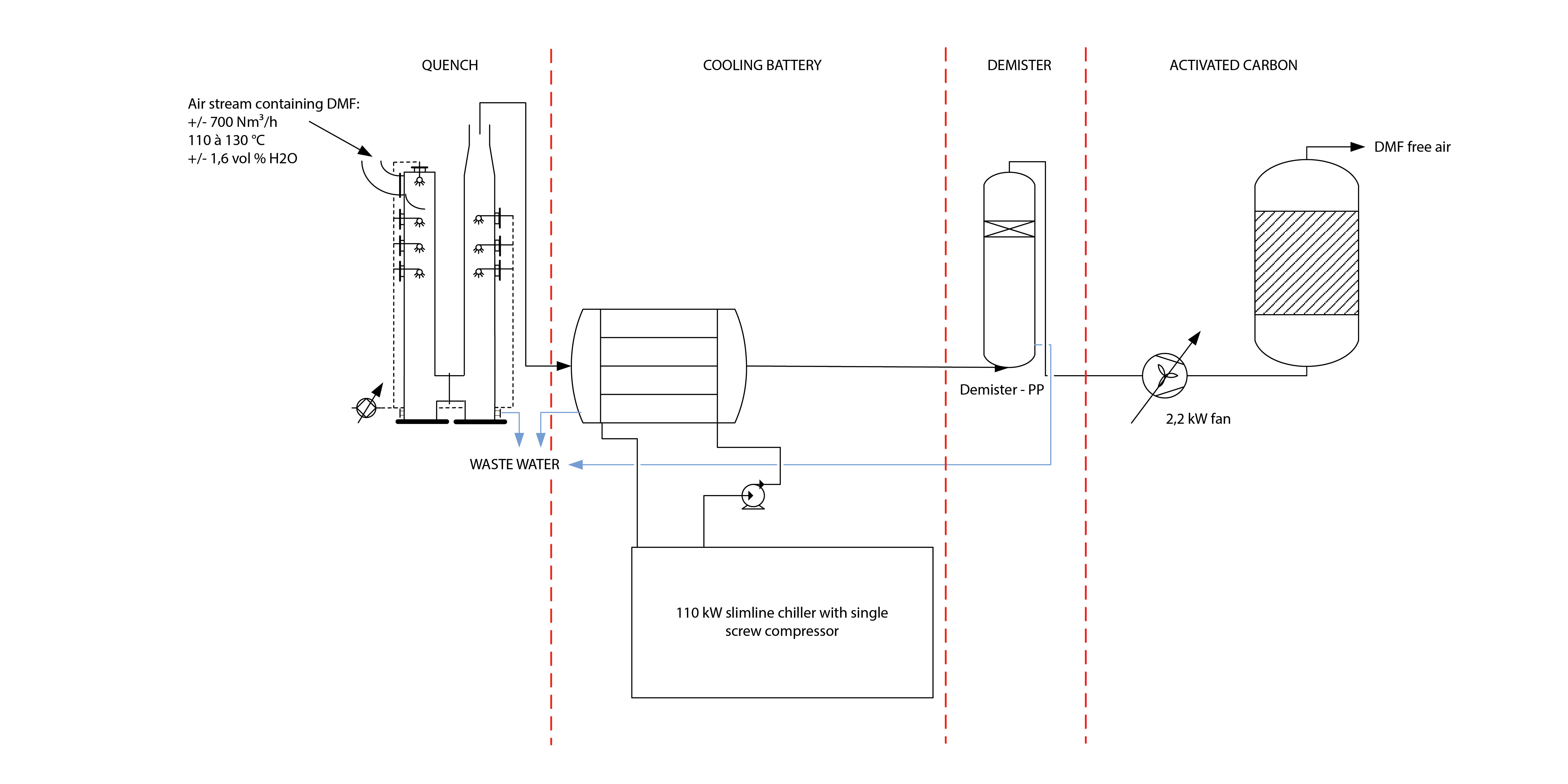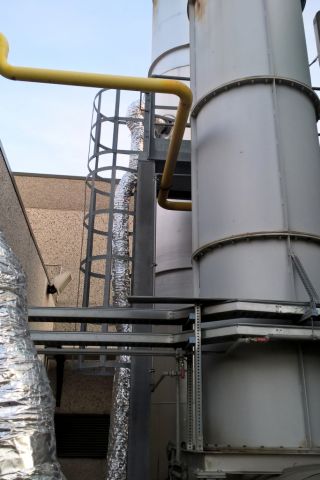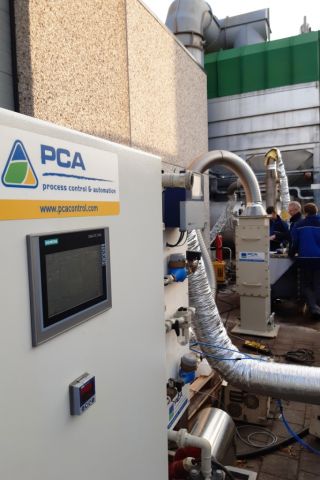Pilot test for treatment of DMF emissions after RTO
Purpose of the pilot test
The tightening of the emission limits for Dimethylformamide (DMF) in the textile industry has created the need for a technical and economic solution to further purify the DMF in an air stream. Treatment by a regenerative thermal oxidator (RTO) alone is no longer sufficient. After all, a RTO unit does not distinguish between the various components to be purified, but simply burns everything as much as possible. In the RTO installations offered by PCA, an emission limit of 20mg C/Nm³ can be reached, but the legislation now increases this limit to 2mg/Nm³. So RTOs will have to be extended to include after-treatment.
A number of players in the textile industry joined forces with Contexbel with the aim of finding an after-treatment that achieves the new emission limit of 2mg/Nm³ in an efficient (i.e. economic) manner. PCA was asked to carry out the associated industrial pilot tests on the basis of a study and laboratory tests. The parameters were further fine-tuned and worked out on an industrial scale.
Execution of the pilot test
Based on the laboratory results, an industrial pilot installation was installed to capture DMF. During the tests the influence of other pollutants on the absorption and adsorption of DMF was analysed as well as the technical and economic feasibility. The pilot installation consisted of four units:
- Quench : cooling airflow using water and first gas scrubbing
- Cooling battery : further cooling / condensation of water driven by a chiller
- Demister : removal of the last drops / aerosols
- Activated carbon : Polisher to remove the last DMF residues by adsorption.
The air stream to be treated was sucked out of the chimney of an existing RTO and then various techniques and settings were tested. In addition to meeting the emission limit, the aim was to generate as little waste water as possible and to cool down the airflow and capture DMF with as little energy as possible.
Pilot test results
In the tested set-ups and settings, we can see that the largest DMF capturing effectively takes place by the Quench in combination with the cooling battery. By cooling with a cooling battery, the waste stream can also be reduced more strongly.
It could be concluded that the emission limit of 2mg/Nm³ could be achieved in different ways, but that it was always a trade-off between different parameters:
- Waste water
- Energy consumption
- Active carbon consumption
In the next phase, the various parameters can be further adjusted to achieve a good balance between the various parameters (waste water, energy, activated carbon). In this way, the final industrial installations can be done in the most efficient way possible.
Are you also looking for help in carrying out pilot tests? Or are you struggling with an air purification problem? Be sure to give us a call!




